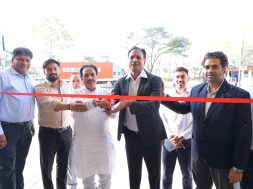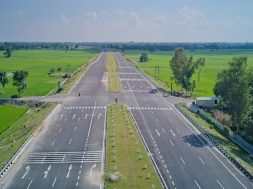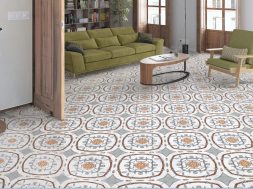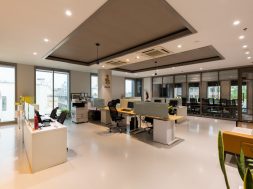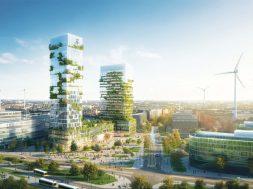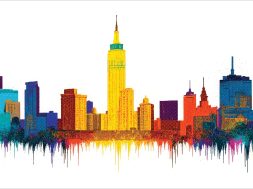A review of the smart city ecosystem

A smart city can conjure a number of images especially of townships dominated by high rises and super high-rises connected via the internet, though this perception is not a lie, it is not true in all cases. The truth is out here, read on.
As India’s population grows there is a substantial need to create a sustainable system. A system which offers a framework for growth, development as also judicious use of the natural and other available resources. Keeping in view of this agenda the concept of Smart Cities was incepted, this also took into account the influx of technology in the cities of the future as also homes driven by automation, popularly known as smart homes. It was argued that even the existing cities can be made smarter by using retrofits. To make cities smarter a number of bodies have been formed like the Smart City Mission, India Smart City Fellows, CITIIS (City Investments to Innovate Integrate & Sustain) which implement, oversee and generate ideas for cities to be smarter.
Though it may seem that Smart Cities are akin to developed townships, it is also about making existing infrastructure smart. It takes a look at macro and micro aspects of cities like public spaces, transport, civic utilities and attempts to make them more accessible and usable by the public. Such measures are necessary, take Mumbai for example, time and again we have heard that the financial capital has been forced to manage more headcounts that it can manage, such factors can deteriorate the quality of life not just in Mumbai but all the cities which exists in India, so it is essential to focus on these parameters. When it comes to planning cities, zoning is one approach which continues to be practiced, it is the way the governments control the physical development of land and the kinds of uses to which each individual property may be put. Zoning laws typically specify the areas in which residential, industrial, recreational or commercial activities may take place Amit Khanna, Design Principle, AKDA believes this is a bad idea and needs to be done away with. “Creating zones,” says Amit, “is a Victorian idea which needs to stop as it is not suitable to address the contemporary challenges which cities face.” In the long run this also entails that the expansion of cities has to be addressed correctly.
Mitu Mathur, Director, GPM Architects and Planners says “The expansion of cities that urban population growth entails cannot be contained merely by the horizontal expansion of cities, but instead, must accommodate more innovative, inclusive, and sustainable models. One of the basic requirements to sustain a smart city is housing, for which redevelopment of under-utilized urban areas needs to be seen with a fresher perspective as a model for new India. One such example is of prominent residential colonies in Central Delhi – Netaji Nagar and Sarojini Nagar that have a tremendous opportunity to accommodate mass housing and, owing to their scale, set an example as self-sustainable dense urban communities.”
When it comes to development of smart cities user end feedback is necessary and so are observations made by experts. This need was duly noted by the Indian government, following which Ministry of Housing and Urban Affairs (MoHUA) incepted The India Smart Cities Fellowship, which is an initiative of the Ministry of Housing and Urban Affairs (MoHUA) under the Smart Cities Mission to cultivate youth leadership and usher vibrancy in the design of India’s urban future. The India Smart Cities Fellow are engaged in city-specific projects, through the Smart City Special Purpose Vehicles to provide solutions to city-specific issues. A number of architects are a part of this programme which allows them to point out ways and methods to engage the citizens of the country and make cities smarter. Architect Shubhashweti Sinha and her team as part of India Smart Cities Fellows (ISCF) developed a design tool and digital platform which integrates measurable aspects of quality public spaces and infrastructure to enable citizens to score/rate public spaces and participate in their improvement. It helps a city to systematically view all public spaces and undertake practical interventions and evaluations.
Cities need to be breathable; they need to be healthy hygienic& humane too. As Prasanna Desai, Founder PDA (Prasanna Desai Architects, Pune) who has been closely working on major urban design initiatives under SMART CITY Pune initiative with the Pune Municipal Corporation. “In simple words, the initiative is about creating healthy, hygienic and habitable neighbourhood, which will lead to a smart city. And this will also lead to quantitative, economic and environmental changes.” Prasanna and his team has been working on an initiative called Healthy Aundh, which consists of redesigning existing streets in the Aundh neighbourhood. The new street design will support walkability, cycling, universal accessibility, and requisite amount of tree cover.
It is essential to understand that such projects which look seemingly tiny (but have a huge impact on people’s lives) as compared to a huge city connected with IoT and emerging technologies are also a major part of the Smart City initiative. So, when we look at the Smart City initiative that is one important factor to keep in mind. Slowly and silently the government has so far executed 2357 projects at a cost of ₹ 39,603 Cr across 100 smart cities which were chosen through a selection process.
The word smart will continue to remain objective given the fact that India is a concoction of diverse minds across diverse landscape, not to mention the income inequality. But there will be some areas which will overlap. Energy consumption and smart utilisation of resources which includes light, water, transport etc will be among them.
Prag Bhatnagar, Senior Vice President, Havells India, says, “Smart lighting is the key enabler for a “vibrant and sustainable” city. Smart lighting enables different lighting scenes by adjusting the light levels for individual street lights. Also, when the situation becomes busy, it (smart lighting) gears up for a higher lighting level enabling surveillance of the crowd for security reasons.” Likewise, smart lighting can reduce cost without affecting efficiency in the process, Sumit Joshi, Vice Chairman and Managing Director, Signify Innovations India, says, “Smart lighting is based on the concept that lighting can do and should do more than just illumination. The transition of lighting from incandescent to LED helped to enable this technology, as LEDs can be digitally controlled. Therefore, smart lighting can help you manage lighting diagnostics, lower costs, operate more efficiently and connect your lighting systems using standard networking and communications technologies.”
The smart use of resources in smart cities will be governed by MEP systems specifically designed for the process Aniruddh Bapat, Head – MEP, L&T Realty points out “For smart cities, we need a robust MEP system that can talk to the BMS/Server through IOT sensors. Today, even retrofit solutions are available which can make your existing MEP equipment smarter. There are a lot of digitization efforts in terms of BIM modelling and usage of MEP software/tools for the implementation of load calculations, air distribution, as well as hydraulic systems, are put in.”
In the backdrop of this pandemic experts have also pointed out that the role of home automation in future cities is only going to increase and driven by technology an increasing number of homes will also become smarter. Abhishek Chadha, Founder & CEO, The KariGhars says “In today’s time of Covid-19, a smart home is beneficial as it offers a myriad of possibilities of working remotely with the use of controlled home functions. One can oversee all functions of a home as long as they are interconnected through the internet. Such correspondent functions of one room to another comes in handy, especially while living in villas, bungalows or multi-floor flats. Home automation offers various safety prospects by preventing accidental damages such as from flood or fire.”
In the long run, it remains to be seen how smart homes will shape up and as we move ahead to realise more and more smart cities, we have to keep in mind the basics, as Shaily Ganatra, Interior Designer & Founder, The Auura Interior Design Studio, points out, “I think the initiative will continue to remain a success if its implementation continues in the right direction, which means basics like housing, sanitization and electrification have to be addressed. For building such cities, it is necessary to invoke localisation too, the raw materials and labour should be sourced locally as it will help boost the city’s economy and generate employment. It is essential that the centre, state, and local governments work together to boost the living conditions of people in these future smart cities and ensure it remains self-reliant in the long run.”
Cookie Consent
We use cookies to personalize your experience. By continuing to visit this website you agree to our Terms & Conditions, Privacy Policy and Cookie Policy.
